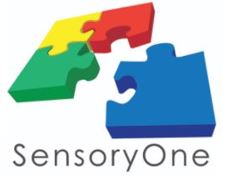For many individuals—especially those with sensory processing challenges, ADHD, or autism—staying focused in a busy world can be difficult. Sensory input, such as light, sound, textures, or movement, can either be overwhelming or insufficient, leading to distractibility, anxiety, or restlessness.
Sensory regulation refers to the brain’s ability to process and respond appropriately to sensory input, allowing individuals to stay calm, engaged, and focused. When sensory needs are met, children and adults can perform better in school, work, and daily life.
Here we explore how sensory regulation works, the science behind it, and how sensory tools can help improve focus and self-regulation.
What is Sensory Regulation?
Sensory regulation is the body’s way of managing the information it receives from the environment. The nervous system constantly processes sensory input from sights, sounds, textures, smells, and movement, allowing individuals to react appropriately.
For many people, this process happens naturally. However, for individuals with sensory processing difficulties, the brain may either:
- Over-respond (hypersensitive), leading to sensory overload, anxiety, or avoidance of stimuli.
- Under-respond (hyposensitive), causing a need for extra movement, touch, or stimulation to stay engaged.
When sensory input is not well-regulated, it can lead to difficulty focusing, emotional outbursts, or physical discomfort.
The Science Behind Sensory Tools and Focus
Research in occupational therapy and neuroscience has shown that sensory input directly impacts attention and emotional regulation.
Movement-based input (vestibular and proprioceptive stimulation) has been found to:
- Calm the nervous system by reducing anxiety and hyperactivity.
- Improve focus through tactile and deep pressure input.
- Support executive function by enhancing working memory and cognitive flexibility.
Studies show that providing the right sensory input can significantly improve focus and engagement, particularly in children with ADHD and individuals on the autism spectrum.
Products like those offered by SensoryOne help individuals regulate sensory input, allowing them to stay engaged and focused without becoming overstimulated or restless.
Sensory Tools That Help with Focus
Sensory tools provide the input needed to support regulation and maintain attention. Different types of sensory tools address over- and under-responsiveness, depending on an individual’s needs.
Tactile Sensory Tools (Touch-Based Regulation)
Touch-based sensory tools provide deep pressure, texture, or fidget input to help individuals stay engaged.
- Fidget tools, such as stress balls or textured objects, help release excess energy.
- Weighted blankets and lap pads provide deep pressure to calm the nervous system and improve focus.
- Tactile surfaces, like textured seat cushions or sensory brushes, offer needed touch input.
Vestibular and Proprioceptive Tools (Movement-Based Regulation)
Movement-based sensory input helps individuals who seek physical stimulation or need help feeling grounded.
- Sensory swings provide rhythmic motion that calms the nervous system.
- Balance cushions engage core muscles and help with alertness.
- Rocking chairs or wobble stools allow movement without disrupting focus.
Auditory and Visual Sensory Tools
For individuals sensitive to sound or visual distractions, the right sensory tools can help minimize overstimulation.
- Noise-canceling headphones reduce distractions in loud environments.
- Soft lighting or tinted lenses prevent overstimulation from harsh fluorescent lights.
- Calming sound machines provide background noise to promote focus.
Sensory Strategies for Different Environments
At School
Students with sensory processing challenges often struggle in traditional classroom settings, where noise, movement, and visual distractions can be overwhelming. Sensory tools help students:
- Stay seated and engaged during lessons.
- Take sensory breaks to reset focus.
- Use fidgets or weighted lap pads to maintain attention.
At Work
Adults with sensory sensitivities may face challenges in open office spaces, bright lights, or noisy environments. Simple sensory tools such as noise-canceling headphones, discreet fidget tools, or ergonomic seating can improve focus and productivity.
At Home
Creating a sensory-friendly environment at home can reduce stress and improve emotional regulation. Soft lighting, calming textures, and sensory swings can provide the input needed to stay relaxed and engaged.
How to Choose the Right Sensory Tools
Choosing the right sensory tools depends on individual needs and sensory preferences. Consider the following:
- Does the individual seek or avoid sensory input? Someone who seeks movement may benefit from rocking chairs, while someone sensitive to touch may prefer weighted products.
- What environment will the tools be used in? Classrooms, offices, and home environments require different strategies.
- Does the individual have specific triggers? Identifying overstimulating factors (e.g., bright lights, loud noises) helps in selecting the best sensory tools.
Sensory Regulation for Greater Well Being
Sensory regulation is essential for maintaining focus, emotional balance, and daily functioning. By understanding how the brain processes sensory input and using the right sensory tools, individuals can improve their ability to concentrate, reduce stress, and enhance their overall well-being.
Whether at school, work, or home, sensory tools provide the support needed to stay engaged, calm, and focused, helping individuals with sensory processing challenges thrive.


